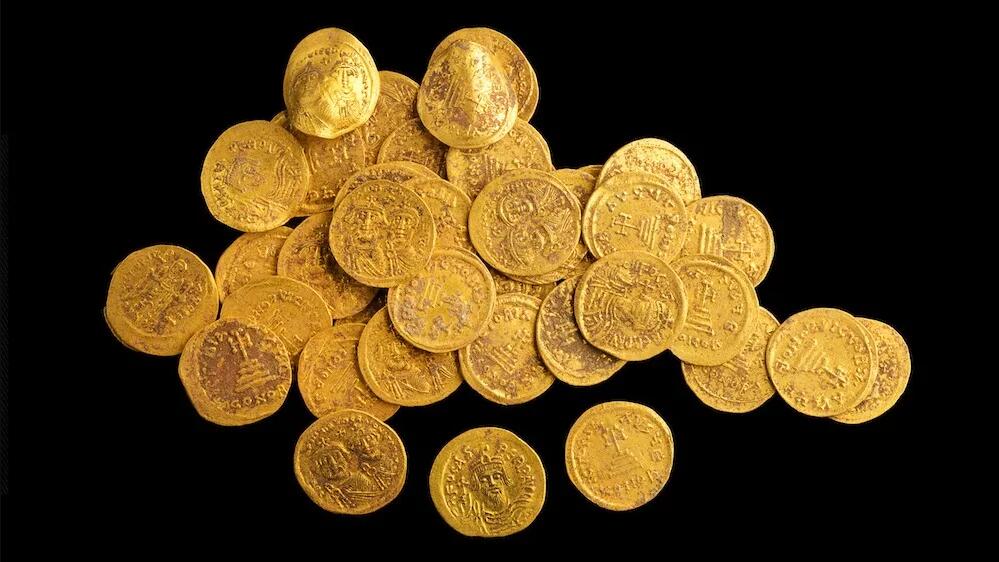Information
Buried treasure of 44 Byzantine gold coins found in nature reserve in Israel
Most of the gold coins depict the likeness of the Byzantine Emperor Heraclius. (Image credit: Dafna Gazit/Antiquities Authority)
Excavators in Israel have discovered a trove of 44 Byzantine gold coins and other valuables.
Coins from the hoard were minted by the Byzantine Empire during the reign of Emperor Phocas (A.D. 602 to 610) and Emperor Heraclius (A.D. 610 to 641). All of the pieces of money were gold solidus coins, which were common currency during the Byzantine era (circa A.D. 330 to 1453). Experts from the Israel Antiquities Authority (IAA) dated the latest coins in the cache to the time of the Muslim conquest of Byzantine Palestine, which occurred in A.D. 635, according to a statement.
"Most of the coins are of the Byzantine Emperor Heraclius," Gabriela Bijovsky, a numismatic expert with the IAA, said in the statement. "And what is particularly interesting is that in his early years as emperor, only his portrait was depicted on the coin, whereas after a short time, the images of his sons also appear. One can actually follow his sons growing up — from childhood until their image appears the same size as their father, who is depicted with a long beard."
Researchers discovered the coins at Hermon Stream Nature Reserve in northern Israel, which was once the site of the ancient city of Banias (also known as Paneas or Panias) and at one time served as a cultic site to Pan, a Greek god of fertility that was half human and half goat, according to an article in the journal Bulletin of the American Schools of Oriental Research. Christians believe it is the site where "the Apostle Peter proclaimed Jesus to be the Christ," according to the statement.
The coin stash was found lodged into the base of a stone wall and experts think it was left there by someone who was fleeing during the Muslim conquest.
"The discovery reflects a specific moment in time, when we can imagine the owner concealing his fortune in the threat of war, hoping to return one day to retrieve his property," Yoav Lerer, excavation director for the IAA, said in the statement. "In retrospect, we know that he was less fortunate."
In addition to the coins, researchers found building ruins; water channels and pipes; a kiln for making pottery; bronze coins; and fragments of pottery, glass and metal artifacts.
"The discovery of the coin hoard may also shed light on the economy of the city of Banias during the last 40 years of Byzantine rule," Lerer said.
Category: English
News
Information
Key words:

